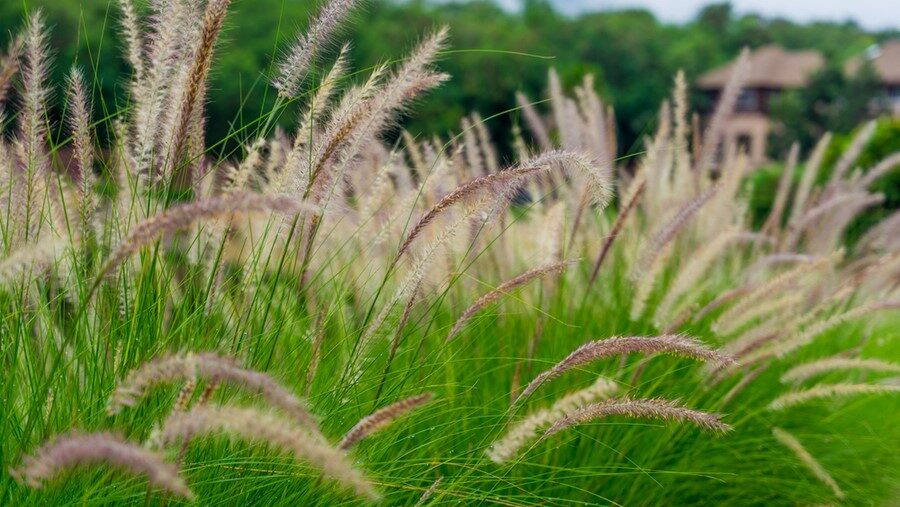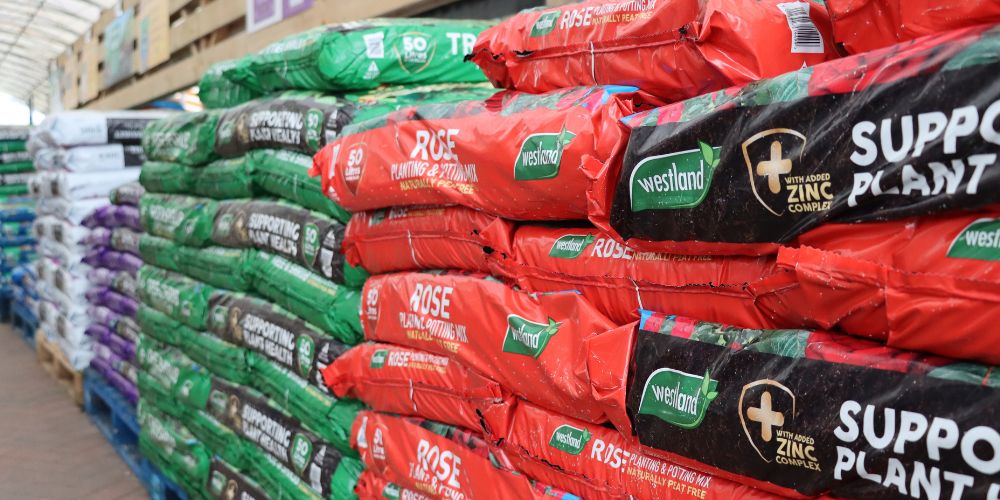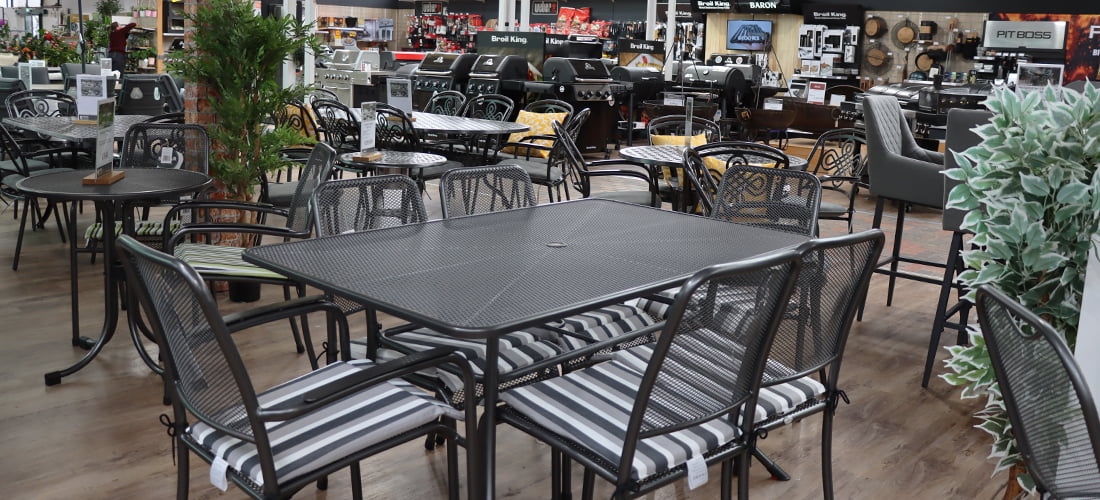Plants with architectural merit add style and character to a garden, and many are ideal in stature to grow in their own attractive container.
Combining plants with varying leaf shapes and plant heights really adds interest and it is worth considering a few ‘architectural’ plants in any size garden for their distinctive shape and form.
Any striking plant may be considered to be ‘architectural’, but for convenience this guide is divided into sections detailing different shapes and sizes. See our regular displays of architectural plants to enhance your garden.
Many of the plants mentioned below can be viewed on our Plant Finder.
ATMOSPHERIC PLANTS
Calla Lily: Deciduous or semi evergreen perennial with showy foliage. Marginal water plant.
Canna Lily: Exotic ornamental foliage & striking red, orange or yellow flowers. Protect from frost.
Cornus (Dogwood): Deciduous shrub grown for its brightly coloured winter stems.
Hamamelis (Witch Hazel): Bright fragrant flowers on bare branches in winter. Deciduous.
Magnolia: Evergreen & deciduous shrubs with dramatic cup shaped flowers. Neutral to acid soil.
Nandina (Heavenly or Sacred Bamboo): Evergreen shrub with elegant foliage providing dramatic autumn and winter colour.
Rhus typhina (Stag’s Horn Sumach): Deciduous shrub with furry branches, large divided leaves and stunning orange-red colour in autumn.
DRAMATIC LEAVES
Fatsia: Evergreen hardy shrub with large exotic leaves. Good for coast.
Fatshedera: Evergreen hardy climber or sprawler. Deep lobed glossy leaves. Sun or shade.
Gunnera: Perennial. G. manicata and G. tinctoria have huge rhubarb like leaves. Good waterside plants. No winter foliage.
Hosta: Deciduous perennial. Large green, blue or variegated leaves.
Ligularia dentata: Large heart shaped leaves, sometimes purplish. Cut back when flowering is over.
Ricinus communis (Castor Oil Plant): Evergreen fast growing shrub, usually grown as an annual. Deep lobed green or bronze leaves.
Vitis coignetiae: Deciduous climber with large heart shaped leaves. Bright autumn colour.
Zantedeschia aethiopica (Arum Lily): Evergreen perennial with arrow shaped leaves. Funnel shaped spathe. Good aquatic plant.
Rhus typhina (Stag’s Horn Sumach): Deciduous shrub with furry branches, large divided leaves and stunning orange-red colour in autumn.
DREAMING SPIRES
Digitalis (Foxglove): Well-loved tall herbaceous plant. Colourful flower spikes. Some varieties are evergreen.
Eremurus (Foxtail Lily/King’s Spear): Herbaceous perennial with very tall, stately upright spikes of flowers.
Fritillaria imperialis (Crown Imperial): Spring flowering bulb with crown of pendent flowers on top of 1m tall stocky stem.
Gladioli (Sword Lily): Arches of funnel shaped flowers in brilliant colours, grown from corms.
Kniphofia (Red Hot Poker): Evergreen herbaceous perennial with vibrant torch like flowers.
Perovskia atriplicifolia ‘Blue Spire’: Deciduous sub-shrub with aromatic greyish foliage, pale stems and blue flowers.
Verbascum (Mullein): Upright herbaceous perennial with tall spires of flowers. Some varieties are evergreen
PLANTS WITH A TWIST
Salix Tortuosa (Dragon’s Claw Willow/Twisted Willow): Deciduous tree with upright twisted stems and narrow contorted leaves.
SPIKY PLANTS
Araucaria araucana (Monkey Puzzle Tree/Chile Pine): Evergreen with very sharp rigid green leaves on long spidery branches. Wind resistant. Well-drained soil in sun or semi shade.
Cynara cardunculus (Cardoon): Herbaceous perennial with large purple thistle-like flowers and clumps of pointed, divided silvery grey leaves. Deciduous.
Echinops (Globe Thistle): Herbaceous perennial with round spiky flower heads in blue or white. Likes full sun and poor soil. No winter foliage, but good dried.
Eryngium (Sea Holly): Herbaceous perennial, blue-ish leaves & stems. Thistle-like flower heads. Full sun, well drained soil. No winter foliage, but good dried.
Mahonia: Evergreen shrub. Spiky architectural leaves, sweet scented yellow flowers and grape like berries. Prefers shade.
Phormium (New Zealand Flax): Evergreen perennial with masses of sword shaped leaves. Needs full sun. Phormium tenax is a good seaside plant with many attractive variegated varieties.
Yucca: Evergreen shrubs with bold sword shaped leaves and tall panicles of white flowers. Yucca filamentosa has stiff leaves with curly white threads. Yucca flaccida’s leaves curve downwards. Yucca gloriosa has a stout woody stem and may be slow to flower
TROPICAL PALMS
Cordyline australis (New Zealand Cabbage Palm): Popular seaside palm-like tree. Evergreen and slow growing. Mass of sword-like leaves on light brown trunk. Very fragrant white flowers in Spring. Hardy in mild areas. Sunny site. C.a. Purpurea has maroon leaves. Many other attractive variegated and coloured varieties.
Dicksonia antarctica (Australian Tree Fern): Evergreen tree-like fern that resembles a palm. Fibrous trunk with crown of palm-like fronds. Needs shady position and rich, moist soil. Protect growing point in winter with straw or old fronds and wrap sacking round trunk. Alternatively overwinter in cool greenhouse.
Phoenix canariensis (Canary Island Date Palm): Tender tropical evergreen palm with leaves that may reach up to 5m long on mature plants. Needs full sun and well-drained soil. Flowers and fruits are not often produced in this country. Protect from frost.
Trachycarpus fortunei (Chusan Palm/Windmill Palm): Tall evergreen palm with woven trunk and large fan shaped leaves on strong stalks in cluster at top of trunk. Dense sprays of small yellow flowers in summer. Needs full sun, sheltered site and fertile, well-drained soil. Frost hardy. May eventually reach 12m in height.
Washingtonia robusta (Thread palm) & Washingtonia filifera (Desert fan palm): Evergreen, fast growing palms with large fan shaped leaves. Protect from frost (min 10°C). Needs full sun and fertile well-drained soil. If grown in a container, water well in summer, moderately for rest of year.
ORNAMENTAL GRASSES
Prolong the season and make your garden earn its keep throughout the year by ensuring that there’s always something to look at. Grasses will seize the eye irresistibly from spring right through to autumn and beyond. Koeleria glauca, Uncinia rubra, Helicotrichon sempervirens, Luzula sylvatica aurea and Carex buchanii will all keep going through the whole year. Most others are back in business in early spring. No need to worry about going on holiday and missing that vital flowering period, foliage colours of grasses will keep going for months.
PROVIDE FOLIAGE COVER
Try a combination of a white striped grass such as Phalaris ‘Feesey’s Form’ or Carex variegata or Holcus mollis albovariegata with a blue grass such as Koeleria glauca, Festuca glauca, Helictotrichon sempervirens and white flowers or silver leafed shrubs.
For yellow or gold themes Alopecurus aureovariegatus, Millium effusum or Carex elata. Add a dash of orange with Carex testacea or deep reddy-brown with Carex buchanii. Use sophisticated cream edged Carex morrowii ‘Fisher’s Form’ to highlight pastel schemes.
Then there’s Deschampsia ‘Tatra Gold’ with daffodils, Carex elata with Euphorbias, Molinia with white roses, the combinations are endless.
ADD STRUCTURE TO YOUR PLANTING
Avoid a flat and two dimensional look to your borders by adding grasses. You’ll gain depth and texture over a long season, avoiding gaps when flowering plants have temporarily switched off!
STRUCTURAL GRASSES
Large and airy Cortaderia (Pampas), Phalaris ‘Feesey’s Form’, Miscanthus, Stipa, Chasmanthium latifolium, Deschampsia caespitosa.
Spiky and arching Carex ‘Evergold’, Carex testacea, Carex ‘Silver Sceptre’ and Carex elata. Small and neat Koeleria glauca, Festuca ‘Elijah Blue’, Festuca ‘Gold Toupee’, Deschampsia ‘Tatra Gold’, Carex bergenii.
LOW MAINTENANCE GROUND COVER
Most grasses are easy to grow, increasing uncomplainingly over the years to slowly form an attractive living carpet.
In the front of the border use the smaller mound forming grasses and mix these with other ground cover plants such as Ajugas and Lamiums. Further back mix the larger grasses with Bergenias and Hostas. Should your grasses ever become untidy, simply cut them down and let them grow up again, the young foliage will grow back brighter and neater for a hair cut.
ADD A NATURAL LOOK
Soften hard landscaping quickly with grasses. There’s no quicker way to bring a country feel to the small town garden than to mix two of three grasses. Stipa tenuissima with its gossamer like flowers, the bigger Deschampsia with its silky flowers that last long into winter and Stipa gigantica with its enormous oat-like flowers will achieve this.
PUT THEM IN A POT
Agropyron pubiflorum with its slightly pendulous habit is an ideal plant for a pot or tub the bluest of the blue grasses it’s a real eye-catcher. Or there’s Carex siderosticta variegata with it’s broad green and white leaves.
MAKE THE MOST OUT OF DIFFICULT SITUATIONS
There’s a grass for every problem area in your garden. Here are a few simple suggestions:
Shade: Millium effusum (Bowles Golden Grass) to lighten the darkness. Chasmanthium latifolium with its bamboo-like appearance, Deschampsia ‘Tatra Gold’ with its almost neon-like spring appearance.
Hot, dry spots: Festuca ‘Elijah Blue’ just loves these conditions, the sunnier it gets the bluer it goes. Koeleria glauca and Helicotrichton sempervirens will do well.
Wet soils: Carex elata aurea (Bowles Golden Sedge), Phalaris ‘Feesey’s Form’ and Molinia caerulea variegata will all do well in a wet spot or by a pond.
BAMBOO
Most bamboo comes from East Asia and the majority are not hardy in our climate. The selection you will find in the garden centre has been picked from the fully hardy or frost hardy ones. They require generous watering until established, and if grown in a pot make sure it is of sufficient size and water regularly. If you are growing a bamboo that is invasive you can prevent problems by either growing it in a container, growing it in a container plunged into the soil or surrounding the plant with a layer of thick plastic sheeting to prevent the roots spreading further than you want them to. Alternatively you can chop the roots back with a spade each spring and late summer.
The list of architectural plants and ornamental grasses is long and contains far too many to include in this guide, but if you’d like any more information, please speak to a member of our friendly and knowledgeable plant team
USE THE FLOWER HEADS FOR DRYING
Many have attractive flower heads which are suitable for drying and using in dried flower arrangements Hystrix patula (Bottle Brush Grass), Pampas grasses, Miscanthus, Deschampsia caespitosa, Brizia media.
Associate well with other plants: Mix in well with winter and summer flowering heathers and conifers, reflecting their different colours and forms.








